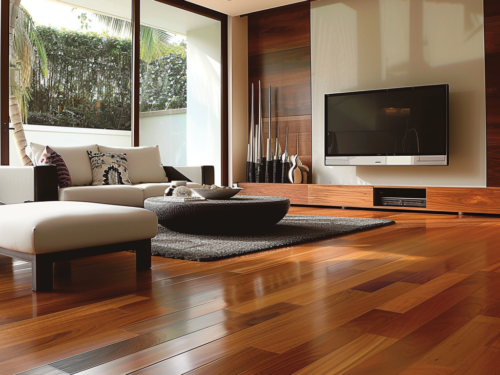
How Do you Protect Hardwood Floors from Scratches and Dents?
Hardwood floors add beauty and warmth to any home. They’re a big investment, and you’ll want to keep them looking great for years to come. So, how do you protect your hardwood floors from scratches and dents? Here are some easy and helpful tips to keep your floors in top shape.
1. Use Rugs and Mats
One of the simplest ways to protect your hardwood floors is by using rugs and mats. Place doormats at all entrances to catch dirt and grit before it gets onto your floors. In high-traffic areas like hallways and living rooms, area rugs can help prevent scratches from foot traffic.
Tip: Use non-slip rug pads under your rugs to keep them in place and prevent slipping. Make sure the pads are designed for hardwood floors to avoid any damage.
2. Felt Pads for Furniture
Furniture can be a big culprit when it comes to scratching hardwood floors. To protect your floors, put felt pads on the bottoms of all your furniture legs. These pads make it easy to move furniture without scratching the floor. You can find felt pads at most hardware stores, and they’re simple to stick on.
Tip: Check the felt pads regularly to make sure they’re still in good shape. Replace them if they’re worn out or have fallen off.
3. Clean Regularly
Regular cleaning is key to keeping your hardwood floors scratch-free. Sweep or vacuum your floors every week to remove dirt and debris that can cause scratches. Use a soft-bristle broom or a vacuum with a floor-brush attachment.
When mopping, use a damp (not wet) mop and a cleaner made for hardwood floors. Too much water can damage hardwood, so always wring out your mop well.
Tip: Avoid using harsh chemicals or abrasive cleaners on your hardwood floors. These can damage the finish and make your floors more prone to scratches.
4. Trim Your Pet’s Nails
Pets are part of the family, but their nails can scratch up hardwood floors. Keep your pet’s nails trimmed to minimize the risk of scratches. If your pet is energetic and runs around a lot, consider putting down rugs in their favorite play areas.
Tip: Use a pet nail grinder for a smooth trim. This can be easier on your pet and more effective than clippers.
5. Be Careful with High Heels
High heels can dent and scratch hardwood floors because they concentrate a lot of pressure in a small area. If possible, avoid wearing high heels on your hardwood floors. If you’re having a party or gathering, you might ask your guests to remove their shoes at the door.
6. Use Floor Protectors
Floor protectors, like plastic or rubber caps, can be placed on the legs of heavy furniture to prevent dents. These protectors distribute the weight more evenly and reduce the risk of damage when moving furniture.
Tip: If you need to move heavy furniture, use a dolly or furniture sliders to prevent dragging and scratching the floor.
7. Maintain the Finish
A good finish on your hardwood floors can protect them from scratches and dents. Over time, the finish can wear down, so it’s important to maintain it. Depending on the type of finish, you may need to reapply it every few years. For example, a polyurethane finish can be refreshed with a new coat when it starts to look dull.
Tip: Consult a flooring professional to determine the best maintenance schedule and products for your specific type of hardwood floor.
8. Be Mindful of Sunlight
Direct sunlight can fade and weaken the finish on your hardwood floors, making them more susceptible to scratches and dents. Use curtains or blinds to block out strong sunlight during the hottest parts of the day. You can also rearrange furniture and rugs periodically to ensure even exposure to sunlight.
Tip: UV-protective window films can help reduce the impact of sunlight on your floors.
9. Avoid Dragging Objects
Dragging heavy objects across your hardwood floors can cause deep scratches and dents. Always lift furniture and other heavy items when moving them. If you need to slide something, use a soft cloth or a furniture slider to protect the floor.


